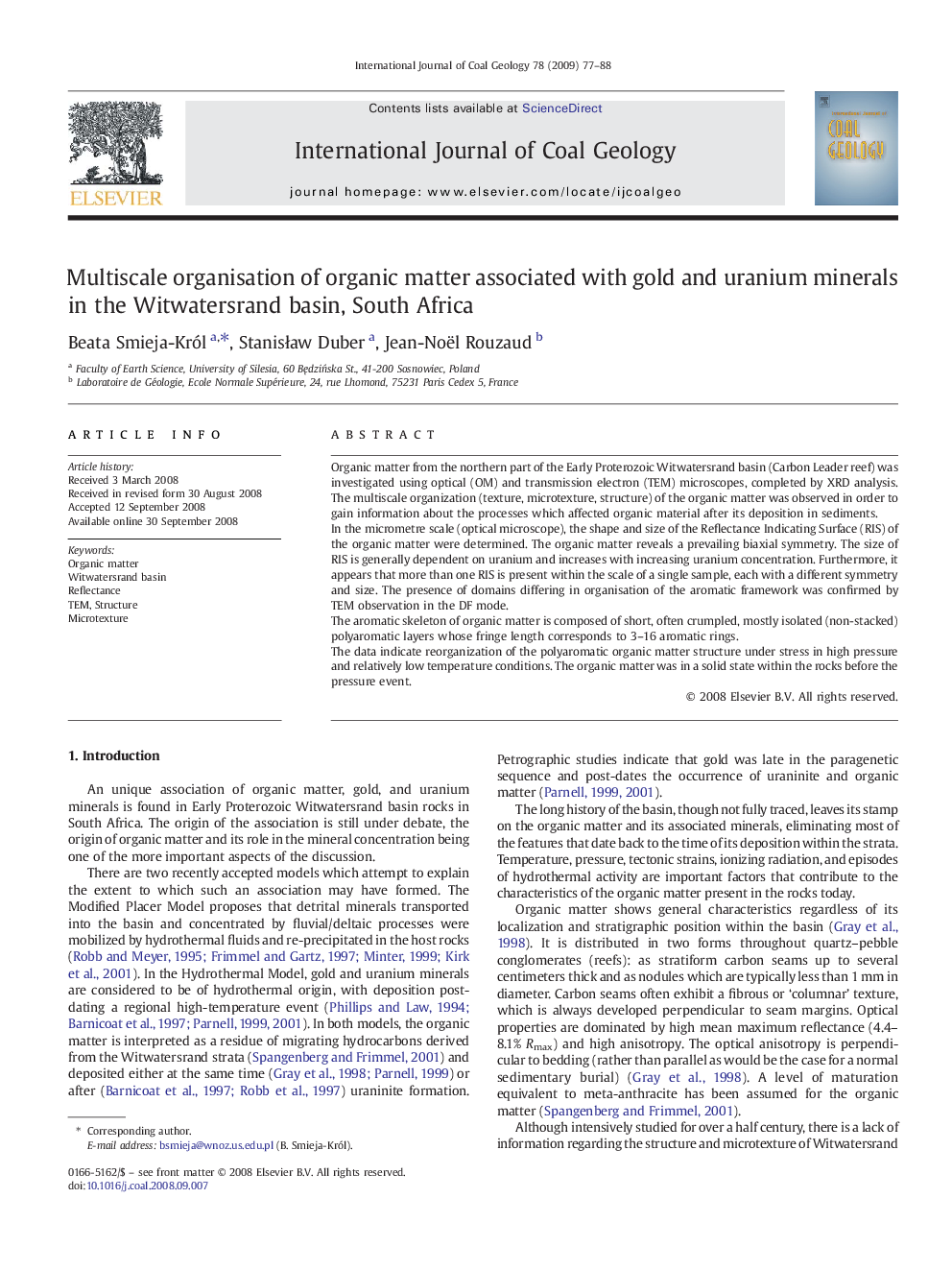| Article ID | Journal | Published Year | Pages | File Type |
|---|---|---|---|---|
| 1754029 | International Journal of Coal Geology | 2009 | 12 Pages |
Organic matter from the northern part of the Early Proterozoic Witwatersrand basin (Carbon Leader reef) was investigated using optical (OM) and transmission electron (TEM) microscopes, completed by XRD analysis. The multiscale organization (texture, microtexture, structure) of the organic matter was observed in order to gain information about the processes which affected organic material after its deposition in sediments.In the micrometre scale (optical microscope), the shape and size of the Reflectance Indicating Surface (RIS) of the organic matter were determined. The organic matter reveals a prevailing biaxial symmetry. The size of RIS is generally dependent on uranium and increases with increasing uranium concentration. Furthermore, it appears that more than one RIS is present within the scale of a single sample, each with a different symmetry and size. The presence of domains differing in organisation of the aromatic framework was confirmed by TEM observation in the DF mode.The aromatic skeleton of organic matter is composed of short, often crumpled, mostly isolated (non-stacked) polyaromatic layers whose fringe length corresponds to 3–16 aromatic rings.The data indicate reorganization of the polyaromatic organic matter structure under stress in high pressure and relatively low temperature conditions. The organic matter was in a solid state within the rocks before the pressure event.
